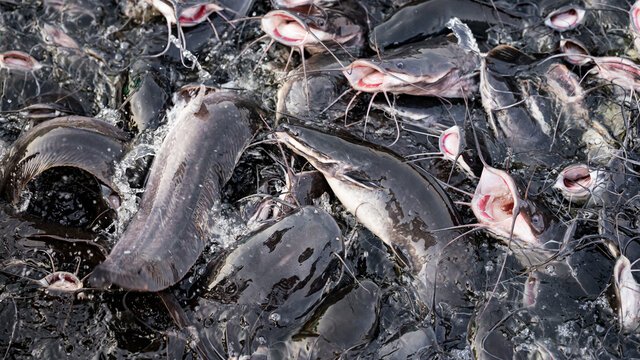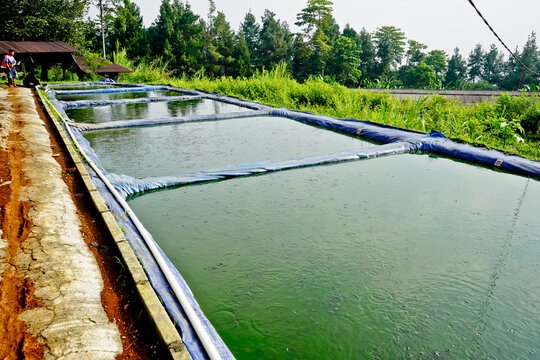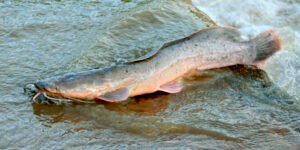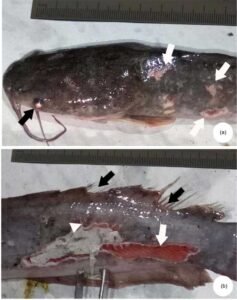Introduction
Catfish farming is a lucrative venture that has gained popularity among Nigerian and African farmers. The journey to success, however, requires more than just a pond and some fish. This comprehensive guide will walk you through every step of starting a catfish farm, from setting up your pond to managing your stock. By incorporating real-life examples and practical advice, this article aims to provide you with a roadmap to a successful catfish farming business. And remember, Agrofiat is here to support you every step of the way.
Why Choose Catfish Farming?

Catfish is a popular choice for farmers due to its high demand and relatively low maintenance compared to other fish species. The fish is a staple in many Nigerian and African households, making it a profitable market. Additionally, catfish farming can be done on a small or large scale, making it accessible to various types of farmers.
Setting Up Your Catfish Farm
1. Selecting the Right Location

The location of your catfish farm is crucial. Choose a site with a reliable water source, good road access, and proximity to markets.
Example: Fatima, a farmer in Kano, chose a site near a river with easy access to major roads. This decision helped her maintain a steady water supply and facilitated easy transportation of her products to the market.
2. Constructing the Pond

Pond construction is a critical step in catfish farming. You can opt for earthen ponds, concrete ponds, or tanks. Ensure that the pond is well-constructed to prevent leaks and maintain water quality.
3. Sourcing Fingerlings

Healthy fingerlings are essential for a successful catfish farm. Purchase from reputable hatcheries to ensure disease-free and fast-growing stock.
Example: Aisha, a farmer in Abuja, initially faced high mortality rates with her fingerlings. After switching to a reputable hatchery recommended by Agrofiat, she saw a significant improvement in survival rates and growth.
Click to learn about catfish species
Feeding and Nutrition
Proper feeding is vital for the growth and health of your catfish. A balanced diet ensures rapid growth and high-quality fish.
1. Types of Feed
Catfish can be fed commercial pellets, homemade feed, or a combination of both. Commercial feeds are usually well-balanced but can be costly. Homemade feeds can reduce costs but require careful formulation.
2. Feeding Schedule
Feed your catfish twice daily, adjusting the quantity based on their size and growth stage.
Water Management

Maintaining good water quality is crucial for catfish health. Regularly monitor and manage water parameters such as temperature, pH, and oxygen levels.
Read more about Water management in catfish farming
Disease Management

Disease outbreaks can devastate a catfish farm. Preventive measures and timely intervention are key to maintaining a healthy stock.
1. Common Diseases
Common catfish diseases include bacterial infections, parasitic infestations, and fungal infections. Regular health checks and prompt treatment are essential.
2. Preventive Measures
Maintain good water quality, avoid overcrowding, and source healthy fingerlings to prevent diseases
Read more about diseases in catfish farming
Harvesting and Marketing

When your catfish reach market size, it’s time to harvest and sell them. Ensure you have a market plan in place to maximize profits.
1. Harvesting Techniques
Use appropriate techniques to minimize stress and damage to the fish during harvesting.
2. Marketing Strategies
Identify and target local markets, restaurants, and processing companies. Develop relationships with buyers to ensure a steady demand for your product.
The Role of Agrofiat in Your Success
Agrofiat offers expert agribusiness consulting services to help farmers navigate the complexities of catfish farming. From pond construction to feed formulation and disease management, our team provides tailored solutions to ensure your success. By learning from past experiences and avoiding common mistakes, you can grow your catfish farm into a profitable venture.
learn more…
Conclusion
Starting a catfish farm requires careful planning, proper management, and continuous learning. By following the steps outlined in this guide and leveraging the expertise of Agrofiat, you can navigate the challenges and achieve success. Remember, every successful farmer started with a single pond and a dream. With determination and the right guidance, you too can dive into success.

Hey people!!!!!
Good mood and good luck to everyone!!!!!
God bless you 🙏